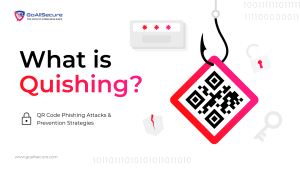The Secret Problems of a Digitally Empowered Workplace
According to a trusted cybersecurity report, 80% of workers in an organisation use shadow IT, citing it’s easier and more productive for them.
What is shadow IT? And is it helpful or harmful? Well, shadow IT refers to any software, hardware, or service that an employee or team uses without informing or obtaining permission from their IT department. It usually originates from a good place, such as a desire to make things easier or help people work together. Still, it also puts security, compliance, and operations at significant risk.
With cloud-first and hybrid work becoming increasingly common, employees can accomplish more than ever by exploring tools, apps, and platforms that help them complete their tasks faster and more effectively. However, this freedom comes at a cost: an increasing number of people are using shadow IT. In 2025, as companies adopt cloud services, third-party connections, and distributed teams, they won’t be able to ignore Shadow IT. If they want to keep their data safe, stay compliant, and avoid costly complications, they must take care of it. This blog provides insight for companies to track shadow IT within their organisation and tackle it effectively.
What Shadow IT Looks Like In 2025
Shadow IT is no longer just about using unauthorised software or a USB drive without permission. In 2025, it will feature a range of various technologies, including unauthorised SaaS subscriptions, personal messaging applications for corporate communication, AI tools for content creation and so on. A marketing team using a free design tool, a developer testing code in a cloud environment that hasn’t been permitted, or a manager maintaining files on their own Dropbox account are all examples of shadow IT. Employees often skip the usual steps for procuring and maintaining security because it’s so easy to acquire the newest technology with just a credit card or a free sign-up. The result is a broken IT ecosystem, with the official infrastructure being just the tip of the iceberg, and the security team unable to view the rest.
Top Reasons Why Employees Use Shadow IT
Most of the time, employees don’t use shadow IT tools that aren’t allowed because they are careless or have malicious intent. Most people move towards Shadow IT because they believe the company’s current technology is too slow, restrictive, or outdated for their needs. For example, a data analyst might utilise a third-party AI platform to expedite reporting. A team might find a cloud-based project management application that performs better than the one the firm provides. Some people who work from home may use their own devices or home networks to get beyond the restrictions that VPNs and firewalls put in place. The main reasons behind the shift to Shadow IT are speed, convenience of use, and efficiency. However, these short-term gains could ultimately harm the business in the long run. The next section of this blog provides a detailed description of these security risks.
Recognising The Real Security Risks of Shadow IT
The most considerable difficulty with Shadow IT is that security teams can’t safeguard things they can’t see. Data that is stored or shared on platforms that the organisation doesn’t approve of isn’t protected by its standards for monitoring, encryption, and backups. This means that private information, such as client records, financial data, source code, or proprietary designs, could be made public without anyone knowing. A lot of the technology that people utilise as Shadow IT doesn’t meet the security standards of big businesses. They might not have multi-factor authentication, encrypt data poorly (or not at all), and not allow you to choose who can view what.
Meeting regulatory standards is also a significant challenge due to shadow IT. When companies are required to follow standards such as GDPR, HIPAA, PCI-DSS, or ISO 27001, they must be meticulous in how they handle, store, and exchange data. When employees use technologies that the IT department doesn’t control, it’s practically impossible to keep track of or audit data flows. What if the regulators find apps that aren’t being watched during an inquiry or breach analysis? In that case, you could face legal trouble, incur fines, and damage your brand reputation.
Effects on Operations and Finances
Shadow IT can make things function less smoothly as well as cause security and compliance problems. If teams use different versions of the same technology, they could end up with data silos, workflows that don’t match, and incur extra costs. Businesses might end up paying for enterprise licenses without knowing that their workers are utilising unauthorised (and maybe dangerous) alternatives. There is also less consistency, which makes it more challenging for new employees to learn the system, seek help, and work with people from other departments. If a service is stopped or hacked and the IT staff isn’t ready for it, relying on unsupported platforms could cause workflows to break down in the worst-case scenarios.
How to Find and Identify Shadow IT in Your Company?
You will need a mix of legislation, technology, and culture to find Shadow IT in 2025. Businesses can use cloud access security brokers (CASBs), secure web gateways, and endpoint monitoring solutions to find apps and services that aren’t allowed. These solutions monitor network traffic, track internet usage, and detect problems to prevent users from accessing unauthorised platforms. Security teams can also detect third-party connections by using DNS logging, firewall reporting, and OAuth app analysis.
But just having technology isn’t enough. Companies need to make it clear how to use tools and establish a process for getting things authorised. This ensures that workers know how to request new equipment, identify unsafe conditions, and when to seek IT support. Regular surveys, interviews, and conversations with people from other departments can also help you uncover Shadow IT that automated approaches might overlook. This is especially true in fields such as marketing, design, and research and development, where individuals frequently experiment with new ideas.
How to Correctly Handle and Cut Down on Shadow IT?
You shouldn’t want to eliminate Shadow IT; you should want to make it safe to use. Companies that are ahead of the game know that employees often find better tools before the IT team does. They don’t punish them; instead, they make plans to introduce new technologies safely into the mix. One way to do this is to use “sanctioned sandboxing,” which means that approved app catalogues make it easy for workers to use verified tools that come with regulations.
Another crucial component is providing training and education to your staff. Employees can learn about security standards, the risks associated with Shadow IT, and how to request alternatives without violating the rules through awareness campaigns, workshops, and onboarding courses. It’s also crucial to allow individuals to discuss Shadow IT without fear of retribution. This will turn your workers into friends instead of enemies.
From a governance point of view, companies should regularly evaluate how they employ cloud and SaaS services. They should also define rules for sorting and storing data, and set up identity and access control systems to prevent credentials from being stolen and used on unauthorised platforms. Regularly checking on procurement and licensing usage can also help locate duplicate tools, save money, and make things go more smoothly.
Allowing IT and Different Departments to Work Together
People often regard IT departments as obstacles, which is one of the main reasons Shadow IT is so common. IT needs to stop being a gatekeeper and become a collaborative partner that works with departments to determine their needs, provide safe options, and make informed decisions more quickly. Instead IT experts should help plan new tools and workflows from the beginning, not only when they are up and running. The IT department can help businesses instead of getting in the way if they use agile methods and speed up the process of assessing and approving tools. In 2025, low or no-code governance platforms are going to be all the rage. Many businesses are expected to employ such governance platforms. These systems allow teams to set their own rules or update existing ones, but only within the limits established by IT. This hybrid model strikes a balance between security and flexibility, allowing teams to generate new ideas while adhering to established rules and managing risks effectively.
In Conclusion: Making Shadow IT into Strategic IT
Shadow IT is not only a danger, but it is also a sign. It reveals where employees think they need more help, what tools they truly need, and how fast the company is evolving. Companies shouldn’t simply try to eliminate Shadow IT; they should also utilise it to enhance IT services, generate new ideas, and facilitate collaboration among employees. In 2025, dealing with Shadow IT is no longer about shutting it down; it’s about understanding and embracing it. It’s about creating frameworks that can evolve, foster trust, and increase the business’s visibility, allowing it to grow safely. Businesses may minimise their risk and turn Shadow IT from a problem into a competitive advantage by adopting intelligent monitoring, inclusive policies, proactive IT leadership, and a culture of shared accountability.


















 TRAVEL & HOSPITALITY
TRAVEL & HOSPITALITY HEALTHCARE
HEALTHCARE RETAILS & ECOMMERCE
RETAILS & ECOMMERCE BANKING & FINANCIAL
BANKING & FINANCIAL AutoMobile
AutoMobile MANUFACTURING
MANUFACTURING FOOD
FOOD EDUCATION
EDUCATION







